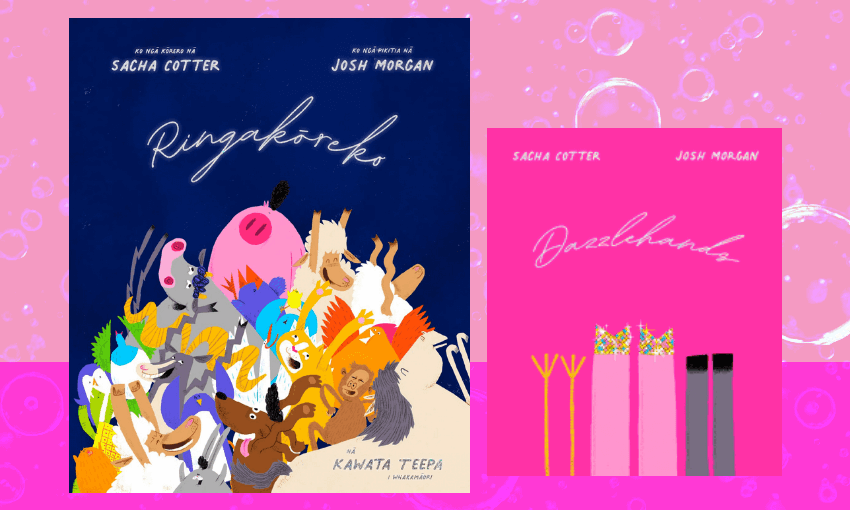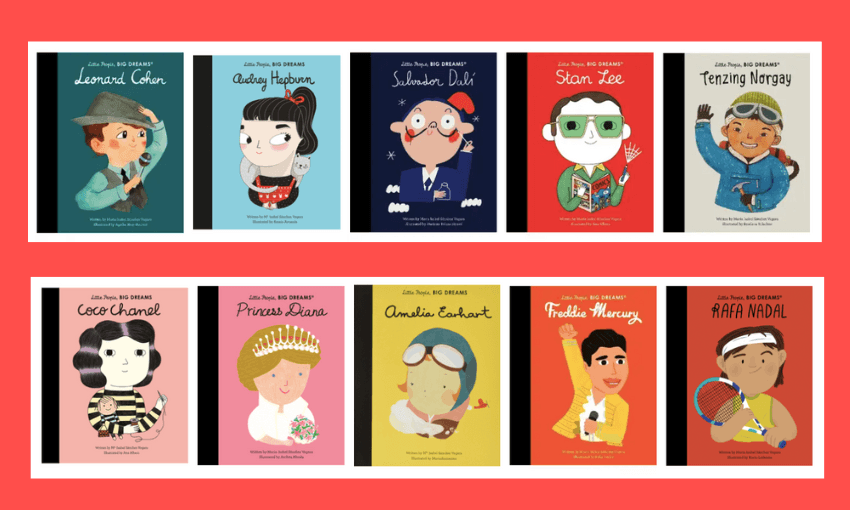This series of children’s books has pushed me over the edge.
I’ve been a children’s bookseller for over 15 years. I’ve seen the rise and fall of Captain Underpants. I’ve been on the frontlines of the Dr Seuss cancellation, and the Enid Blyton renaissance. Through it all, I’ve maintained a stoic demeanour. When children buy Harry Potter, I ask them what house they belong to. When they return a copy of Watership Down and swap it for the Minecraft Redstone Guide, I ask them if they’ve ever fought the Ender dragon. But one series has finally pushed me over the edge.
Little People, Big Dreams.
If you’ve been to any children’s birthday party in the last five years, you’ll know what I’m referring to. Little People, Big Dreams is a blockbuster children’s picture book series that summarises the biographies of inspirational activists, artists and sportspeople for approximately four- to seven-year-olds. There’s also an abridged, board-book range of selected titles for babies. The series website describes the books as “containing figures from many different experiences, backgrounds and journeys” and says “the series aims to develop children’s empathy and their understanding of the world” and “inspire the next generation of outstanding people.”
These books are the bane of my existence. The writing is clunky and formulaic. The subjects are bizarre. And although they use a stable of talented illustrators from around the world, the art has an unpleasantly corporate vibe, like you’re reading a progressive workplace’s company-wide brochure on navigating your upcoming redundancy. They’re the Funko Pops of children’s publishing.
The worst part is, they won’t stop churning them out. Do you know how many of these damn books there are? Neither do I, because every time someone updates the count, another four spring up from nowhere. There are already well over a hundred, and by the time I’ve published this, there will probably be another 10.
Part of the reason I despise them so much (aside from the rank sanctimony and wooden prose) is that there are so many stunning, audacious and exquisitely crafted children’s books out there. Say what you like about the rest of the children’s book market, but the picture book and nonfiction sections have never looked healthier. Pokko and the Drum! A Perfect Wonderful Day With Friends! Dim Sum Palace! Dazzlehands! Paku Manu Ariki Whakatakapōkai!

It hurts my heart to see people stroll past these brilliant titles and head straight to the Little People, Big Dreams section to pick up a copy of Steve Jobs or Ruth Bader Ginsberg for babies.
Children’s picture books should be about what happens when a witch turns you into a pig. Or a sausage with bad intentions who lives down the back of the stove. Or a mouse who is also an architect. They should not be about Elton John or Kamala Harris.
It’s true some kids have extremely niche interests. One of the most enjoyable parts of my job is trying to find the perfect book for a picky child who refuses to read about anything but worms. Or scarecrows. Maybe there truly is a child out there who is dying to read an inspirational picture book about the world’s horniest man, Leonard Cohen.
The LPBD books that are the easiest to tolerate are the ones about sporting legends, because while there are a thousand picture books about trumpet-playing badgers, there are very few books about football players or race car drivers or karate masters. I can see why an NBA-loving child might be delighted to get a book about Michael Jordan for their birthday. I can also see a vague argument for their inclusion in an educational context.
Then again, they’re not that educational. The Goodreads comments are full of parents pointing out basic biographical errors and historically anachronistic illustrations. And for all their good intentions and positive messaging, they certainly make some weird narrative choices. While any picture book about a real person’s life is probably going to have to abridge some of the more sensitive material, the information they choose to exclude is decidedly weird. Consider this passage about Princess Di:
“…but even though her life seemed to be taken from the pages of a fairy tale, Diana soon realised that the prince’s heart belonged to someone else. She fell into a deep sadness. Over time that sadness grew into an eating disorder called bulimia.”
Is it just me, or is it weird that the Princess Di picture book is unafraid to deal with infidelity and eating disorders, but completely neglects to mention Diana’s death? Diana isn’t the only celebrity who dodges the axe. Marilyn Monroe doesn’t die. Nor does Alan Turing. As far as I can tell from a cursory survey, almost everyone makes it out alive.
I’m certainly not against children’s picture books taking on sensitive issues. I used to research books for Starship Hospital, so I know the importance of literature that deals with upsetting and complicated topics. But in Little People, Big Dreams, I get the feeling the author is out of her depth. She talks to children as if they were the recipients of a debilitating head injury. Instead of making the choice to either cut the troubling content, or explain things more clearly, the publishers have made an uneasy compromise, glossing over the difficult source material of people’s lives in a way that is both confusing and infuriatingly coy.
Take this passage from the Turing book:
“Tragically Alan became the victim of an unfair law against gay people. He lost his job and was forced to take a bizarre treatment that made him feel very sad.”
I don’t know about you, but something about this phrasing makes my toenails curl.
I’m not saying the Princess Diana book ought to end in a car crash, or that they should include topics like chemical castration and suicide. I’m just pointing out that the educational justification for these books is flimsy. They’re not going to win the Baillie Gifford Prize for Non-Fiction and they’re not intending to. They’re about emotional truths, rather than biographical ones. Above all, they’re intended to inspire.
But it’s hard not to notice that some of the biographies are more inspiring than others. Take King Charles, for example. Or inspirational girlboss and Nazi collaborator Coco Chanel. Other subjects are more milquetoast. Shakira. David Beckham. Iris Apfel. No offence, but it sounds like a slow night on Jimmy Fallon.
In fairness, the Little People, Big Dreams series aren’t alone in their occasionally dubious choice of subject. I remember a friend once buying a Good Night Stories for Rebel Girls anthology for their Irish niece, only to discover too late that one of the Rebel Girls was Margaret Thatcher.
That’s not to say they don’t have a wide variety of truly fascinating and inspiring people. But it makes no sense to me to buy your child a Little People, Big Dreams book about Basquiat. If you really want to introduce your alarmingly precocious child to his work, isn’t it better to buy a book that actually showcases his illustrations, such as Life Doesn’t Frighten Me by Maya Angelou? Anyone who truly loves his work would surely prefer to see his art on the page, instead of a miserable Canva approximation.
Perhaps it would be a different story if the children’s biography section was in dire straits. But we’re living in a golden age of children’s nonfiction. There’s an exquisite, lavishly illustrated kids’ picture book on almost any historical figure you can think of. Louise Bourgeois. Lisa Carrington. Wu Chien Shiung. Malcolm X. Ken Nedimyer. Andy Warhol. Albert Einstein. There are enough Frida Kahlo picture books alone to fill an entire Mexican airport gift store.
It’s one of my core beliefs that any book that gets a child reading is fundamentally a good book. But in my experience, the target market for these books is not children. It’s hapless adults shopping for baby showers and birthday parties, who stumble into a bookstore, see an illustrated John Lennon picture book and think: that’s funny.
I know, logically, my feelings of hatred and disgust towards these books have no justification in reality. Perhaps they truly will inspire a new generation of Mary Annings and Greta Thunbergs. On the other hand, they shamelessly pander to adults’ niche interests at the expense of children’s imaginative and linguistic capacities. They narrow the market for better and more interesting books. And worst of all, they mean every week, some poor innocent child is unwrapping their birthday present, only to be confronted with Little People, Big Dreams: Chris Martin.
Next time you’re in a bookshop, looking for a present for your coworker’s new daughter or your fresh baby nephew, do that child a favour and try picking out a book about a woman who works in a kiosk or a bear who has lost his hat. What happens next may surprise you.



